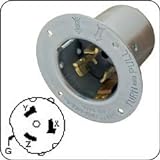Thinking a bit more about your problem two things came to mind
1) The circuit breaker size. You are fine (to the NECs way of thinking) in going to the full rating of the breaker as long as the load is intermittent. Intermittent is defined as being on continuously for less than 3 hrs. If you are boiling for 2 hrs and then shutting down then you have an intermittent load and are fine as far as NEC considerations apply. You might want to give this some thought i.e. as to how long you think the HLT load plus boil load will be on. If the sum of the HLT and kettle on times is greater than 3 hrs then you have a continuous load and should size the breaker to 125% of that load. If the kettle and HLT on times are over 3 hrs but there is a 5 minute break when neither is on then you have an intermittent load, technically, but, in sizing for 100% are definitely not in the spirit of things. The object here is not to find ways around the code but to be safe.
There are breakers rated 100% for continuous loads but there are some additional requirements with respect to the temperature ratings of the wiring used and the connected equipment. Again, I would advise consulting a pro.
2)Related to this is that the drawing shows HLT and kettle connected to the same panel and thus the same source of AC. If both kettle and HLT heaters were energized then clearly there would be an overcurrent situation and the breaker would trip (we hope). I see that there is a SPDT switch which prevents control signal from going to both sets of SSRs but keep in mind that SSRs tend to fail open. If one does and there is overcurrent then the breaker should protect things but if you can prevent that from ever happening by, for example, feeding the HLT from a separate circuit from the panel or using contactors in series with the SSR's then you are not relying on the breaker alone.
Further to this is that in my experience you want the HLT on line continuously throughout the brew. Initially it is used to heat strike water, then water for infusions, then water for sparge, then makeup water for boil loss, then hot water for pushing the last of the wort through the chiller and finally for rinsing the chiller. I know that having to shut the HLT down when the kettle is operating would not work for me. As such I would, in your situation, give considerable thought to separating the HLT from the kettle power supply. You may have thought this through and come up with procedures that never require hot water during boil in which case you can dismiss this second set of remarks.
















































![Craft A Brew - Safale BE-256 Yeast - Fermentis - Belgian Ale Dry Yeast - For Belgian & Strong Ales - Ingredients for Home Brewing - Beer Making Supplies - [3 Pack]](https://m.media-amazon.com/images/I/51bcKEwQmWL._SL500_.jpg)













